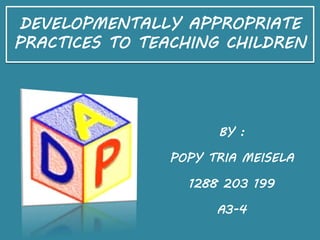Recommended
Common difficulties and solutions in teaching English as a foreign language

Common difficulties and solutions in teaching English as a foreign languageDr. AbdulRahman M. Gadah Al Madinah University, Educational Office of East Makkah
Recommended
Common difficulties and solutions in teaching English as a foreign language

Common difficulties and solutions in teaching English as a foreign languageDr. AbdulRahman M. Gadah Al Madinah University, Educational Office of East Makkah
Language Curriculum Design - Chapter 1

Language Curriculum Design - Chapter 1Institude of applied science technology Jahad Daneshgahi (UASTJD)
More Related Content
What's hot
What's hot (20)
An introduction to content and language integrated learning

An introduction to content and language integrated learning
Viewers also liked
Viewers also liked (8)
Writing Right: Teaching Writing Conventions Specific to a Discipline

Writing Right: Teaching Writing Conventions Specific to a Discipline
Scaffolding Learning in an Academic ESL Listening-Speaking Class

Scaffolding Learning in an Academic ESL Listening-Speaking Class
Similar to academic speaking
Similar to academic speaking (20)
designing a classroom environment for early childhood

designing a classroom environment for early childhood
Teaching Adults: What Every Trainer Needs to Know About Adult Learning Styles

Teaching Adults: What Every Trainer Needs to Know About Adult Learning Styles
Tracing alignment of Lao Teacher Competencies with the SEA-TCF

Tracing alignment of Lao Teacher Competencies with the SEA-TCF
More from popy meisela
More from popy meisela (6)
academic speaking
- 1. BY : POPY TRIA MEISELA 1288 203 199 A3-4 DEVELOPMENTALLY APPROPRIATE PRACTICES TO TEACHING CHILDREN
- 2. Children have differences behavior, characteristic, and learning style with teens and adult. As teacher should make preparation,approaches,method,strategy,and inovation to teach children. The teacher should make them always interested to learn. Teaching Children
- 3. Developmentally appropriate practice, often shortened to DAP, is an approach to teaching grounded in the research on how young children develop and learn and in what is known about effective early education. Developmentally Appropriate Practice ( DAP )
- 4. 3 CORE CONSIDERATIONS OF DAP 1. Knowing about child development and learning. 2. Knowing what is individually appropriate. 3. Knowing what is culturally important.
- 5. Effective DAP Teaching Strategies assist you in meeting the needs of the children in your program: 1. Give assistance 2. Provide information 3. Give directions 4. Acknowledge
- 6. DAP in the Classroom To successfully engage in developmentally appropriate practice (Copple & Bredekamp, 2006), teachers need to: Meet children where they are, as individuals and as a group. Help each child attain challenging and achievable goals that contribute to his or her
- 7. Teaching children is not easy. Teacher must have approach in teach them.DAP (Developmentally Appropriate Practice) is one of approch about how children learn and develop. It’s can to help teacher to teach children. DAP has some teaching strategy for teacher when they teach in the Classroom. CONCLUSION
